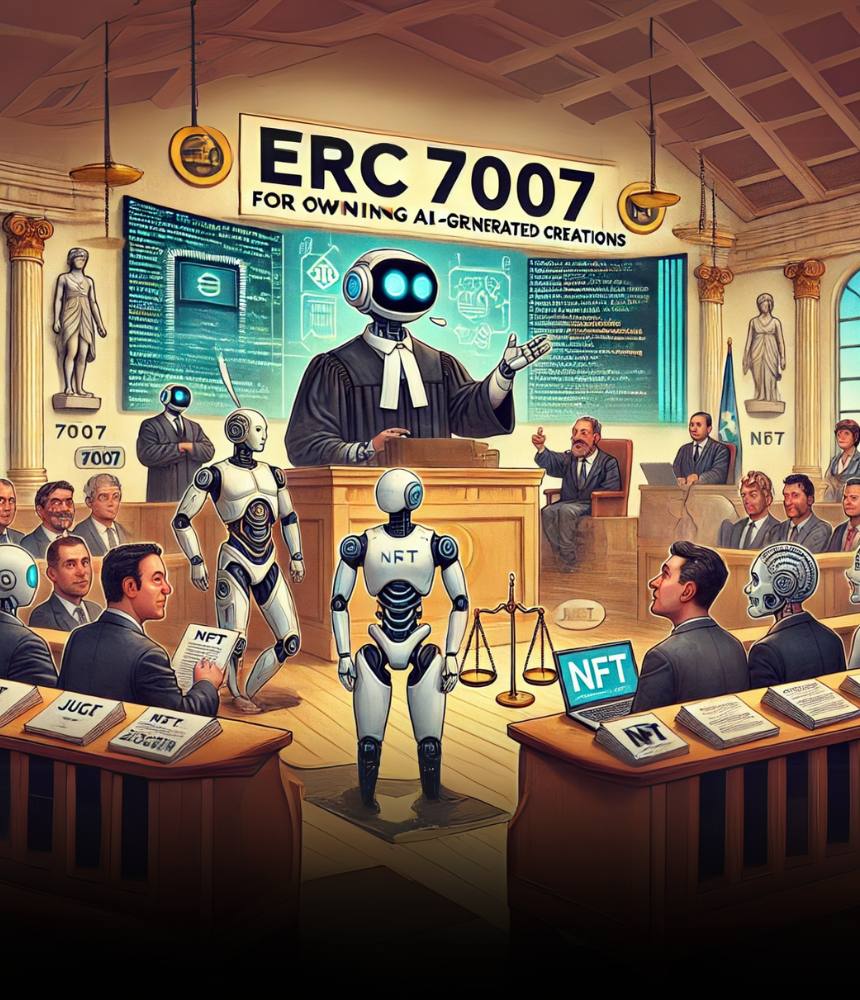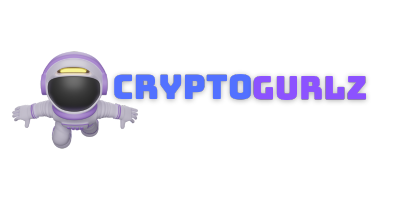Cryptocurrency Prices by Coinlib

ERC7007 Personal Your AI Creations, Effortlessly

AI-generated artwork has opened new doorways for creativity, nevertheless it additionally raises a serious query—who owns the work when a machine creates it?
Conventional copyright legal guidelines weren't designed for AI, leaving artists, builders, and authorized specialists scuffling with questions of possession and originality.
This uncertainty has led to copyright disputes, considerations over AI studying from current works, and fears that human artists might lose recognition and revenue. With out clear protections, each AI-generated and human-created digital artwork stay in danger.
The excellent news is that blockchain expertise gives options. Some blockchain platforms are stepping in to offer much more accessibility to confirm possession, transparency, and truthful compensation—serving to to guard digital artwork, irrespective of who (or what) creates it.
What's AI-Generated Artwork?
AI-generated artwork is paintings created with the assistance of synthetic intelligence.
As an alternative of an individual drawing or portray by hand, AI instruments use information and patterns to create photographs, music, and even designs. These instruments can copy well-known types, make one thing new, or assist artists carry their concepts to life.
AI-created artwork has made creativity extra accessible. Anybody can sort an outline, and AI will flip it into an in depth picture in seconds. Some artists use AI to experiment with new concepts, whereas others let the expertise generate complete items.
The First Types of Machine-Generated Artwork
Machine-generated artwork has been growing for many years, one thing stunning for many individuals lengthy earlier than it grew to become broadly recognized.
Within the Sixties, artists and pc scientists experimented with early algorithms to create summary patterns and geometric designs. These early works, usually created utilizing primary programming languages, laid the inspiration for what would later change into AI-driven creativity.
As expertise improved, AI artwork moved past easy patterns. Researchers developed neural networks within the Nineteen Nineties and early 2000s able to recognizing and replicating inventive types. This led to AI applications that would remodel photographs into work, like how apps right this moment can apply filters to imitate well-known artists.
Nonetheless, one of many largest shifts got here with NFTs (Non-Fungible Tokens). Earlier than NFTs, digital artwork—together with AI-generated items—was tough to promote or declare possession over as a result of anybody might copy and share it.
NFTs modified this through the use of blockchain expertise to confirm possession and uniqueness. AI artists might promote their work as digital belongings, creating a brand new artwork market.
Among the first AI-based NFT initiatives demonstrated how AI and blockchain might work collectively, making digital artwork extra useful and collectible.
With these developments, AI-created artwork has change into a acknowledged type of artistic expression. Immediately, AI can generate work, sculptures, music, and animations, and artists and collectors are embracing the probabilities.
The Challenges of AI-Created Artwork
And as all good issues include challenges, AI-created artwork is not any exception. Whereas it has opened up new artistic potentialities, it has additionally raised severe questions and considerations, particularly round possession, originality, and ethics.
One of many largest issues is copyright and possession. Since AI can create paintings with out direct human involvement, who owns the ultimate piece is unclear. In most authorized techniques, AI can't maintain copyright, that means possession often falls to the one that gave the AI directions or the corporate that constructed the AI.
Nonetheless, when AI generates extremely detailed photographs with minimal human enter, this creates a grey space in copyright legislation, making it tough to find out who deserves credit score and compensation.
One other problem is AI studying from current artwork. AI fashions are educated on huge quantities of information, usually together with copyrighted artworks. This raises the query: is AI-generated content material really authentic, or is it simply an altered model of current works? Many artists argue that AI shouldn't be educated on their creations with out permission, whereas builders declare it falls underneath truthful use or transformation. This debate continues to develop as extra AI-generated items resemble actual artists' types.
There are additionally considerations in regards to the devaluation of human creativity. If AI can generate high-quality artwork in seconds, will human artists battle to compete? Some worry that AI-generated content material might flood the market, making it more durable for conventional artists to earn recognition and revenue.
Others see AI as simply one other device, like pictures or digital enhancing, that artists can use to reinforce their creativity moderately than exchange it.
These challenges spotlight the necessity for clearer legal guidelines and moral pointers to guard artists and AI-generated creativity's future. However till then, it should assist no less than some instruments that may assist on this regard.
Methods to Shield AI-Created Artwork?
With the rising presence of AI-created artwork, defending possession and making certain truthful use has change into a serious concern. Since AI challenges conventional copyright legal guidelines, artists and builders want new methods to confirm authorship, show originality, and safe rights over their creations. Fortuitously, a number of rising options are serving to deal with these points.
One promising method is blockchain expertise, which creates a clear, unchangeable file of possession. NFTs (Non-Fungible Tokens) had been one of many first instruments to carry this concept to digital artwork, permitting artists to assign distinctive possession to their works. Nonetheless, whereas NFTs helped set up authenticity, they did not absolutely clear up the problem of defending AI-generated content material, particularly when proving originality or figuring out truthful use.
A extra superior answer is the 7007 protocol, which supplies verifiable possession and authenticity for AI-generated content material (AIGC) on the blockchain. Not like NFTs, this protocol protects AI-created artwork and human-generated works, making certain that each digital and conventional artists can safeguard their mental property. The 7007 protocol gives a clear and traceable system the place creators—whether or not human or AI—can securely register and handle their works. This helps stop unauthorized use whereas making it simpler for artists to monetize their creations pretty and effectively.
Except for blockchain-based options, one other necessary method is growing clearer copyright legal guidelines. Nonetheless, since implementing such legal guidelines is a posh and prolonged course of, platforms just like the 7007 protocol have change into important go-to options for creators right this moment.
Conclusion
We hope you now have a clearer understanding of AI-generated artwork and the challenges it brings. As expertise evolves, new options like blockchain (together with completely different blockchain platforms) and improved copyright legal guidelines are serving to defend digital creativity.
The long run remains to be unfolding, however AI-created artwork can change into safer for everybody with the precise instruments, possession, and equity.
Disclaimer: This text is supplied for informational functions solely. It isn't provided or supposed for use as authorized, tax, funding, monetary, or different recommendation.
